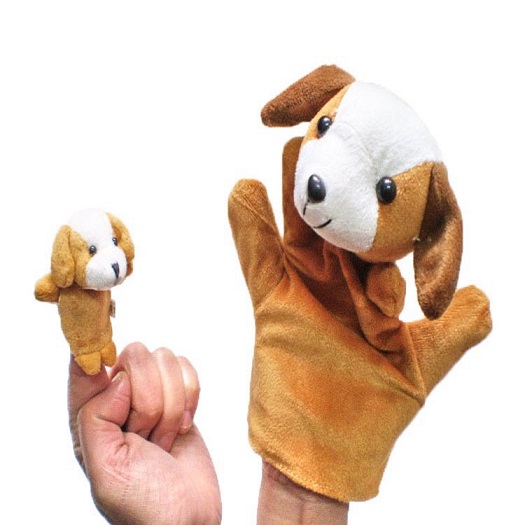


On the third day of the workshop, they brought the puppets out, and we had to work with the cameras and monitors and learn how, when you move the puppet one way, it appears the other way on the monitor -it’s inverted.
#AMAZING PUPPETRY PROFESSIONAL#
I was with a bunch of professional actors from university -the youngest in the group at 18 with no idea of acting. The light bulb really went on for me when my brother, who was working for Televisa at the time, invited me and my friends to attend a workshop with Americans for a children’s show that had puppets. Was reading that book your light bulb moment? It was the first time I saw how it worked, and it blew my mind that they had to work with their arms above their heads, that they did the voices themselves. The book had pictures of the puppeteers and explanations on how they did it. But I didn’t know much about Jim Henson until a friend of my brother brought me a book, Of Muppets and Men, when I was in high school. I watched the Muppets, too, when that show came out. I think my curiosity was there -I wanted to know how they did it. And then when I was 8, I remember having a playdate at a friend’s house watching Plaza Sésamo for the first time. When I was 5 or 6 years old, I did love to watch Topo Gigio every Monday on TV. I even wanted to work with and talk to the dolphins until I found out about all the science I would need. At one time, I thought I wanted to go to the Olympics -I was good in sports, very competitive. Of all my friends growing up in Mexico City, I was the one who had no idea what she wanted to do. She regrets that she never returned home, but recognizes that, through her work, she can proudly represent and keep close to her heart her love of her homeland, community, and family.ĭid you know from an early age that you wanted to work with puppets, become a professional puppeteer? So it was with great anticipation that I looked forward to interviewing Carmen Osbahr-Vertiz, puppeteer for the Sesame Street character Rosita and someone who had worked for and personally known Jim Henson.Ĭarmen enchanted us with her stories: growing up in Mexico her personal interests and love of family her passion for puppetry and how this turned into her involvement with Jim Henson Productions how she helped create her Sesame Street character, who was vibrant, outspoken, and passionate-much like Carmen herself.Ĭarmen struck us as fearless-a young, raw talent beating out more seasoned professionals for work, leaving Mexico behind to attend a puppetry workshop in New York City because she desperately wanted to learn more, and staying there because Jim Henson himself asked her to.

Photo courtesy of Sesame WorkshopĬarmen Osbahr-Vertiz shares her journey to becoming a professional puppeteer, how she met Jim Henson, and what it’s like being a part of the Sesame Street family.Īs a curator at The Henry Ford, I gained renewed appreciation for Jim Henson while researching the 50th anniversary of Sesame Street in 2019, then again while commemorating Henson’s legacy on the 30th anniversary of his passing in 2020. That’s the beauty of this show.Carmen Osbahr-Vertiz and Rosita. It’s important to give the authenticity and every country is different, therefore each production is different. “We teach each performer proper pronunciation. “There is singing in different African languages,” he says. Stefaniuk says each production aims to remain true to its African roots. “The sculptor has only one opportunity to incorporate the anger, humor and passion of a character, to tell his or her whole story.” “In contrast to the continually changing facial expressions in the animated film, a mask can project a single, fixed attitude,” she says. Taymor didn’t want the faces to look flat and wanted the masks to have depth. But then, I was also very inspired by African masks, which are much more abstract, much more stylized, much more essential, less soft and round.” Buyi Zama as “Rafiki.” (Courtesy of Disney/Joan Marcus)

“I had to play with keeping some of the ‘character’ of the Disney characters, so that they’re recognizable. “Disney animated characters are so expressive – they’re animals, but they’re very human animals,” she says.


 0 kommentar(er)
0 kommentar(er)
